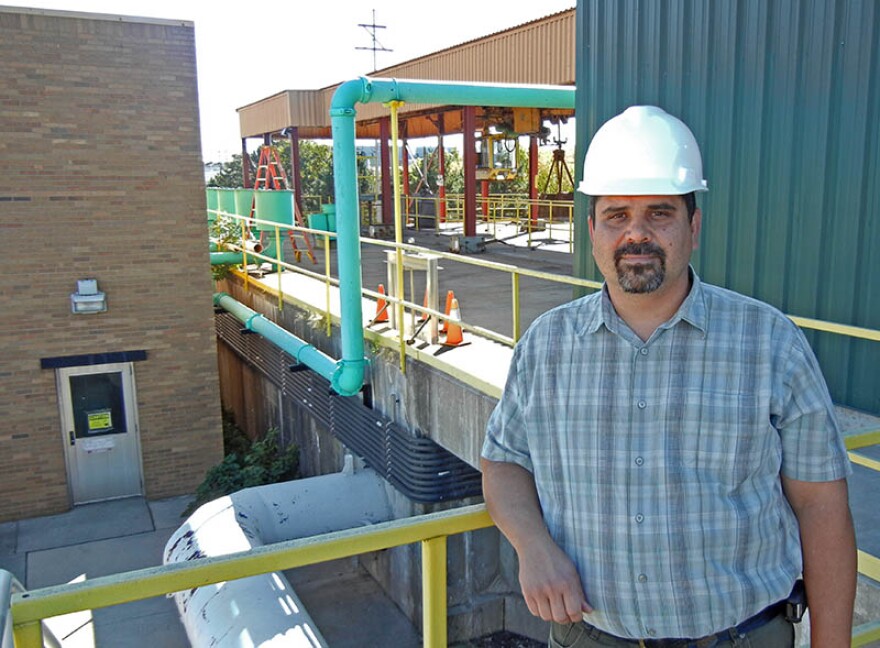When the City of Kalamazoo built its first wastewater treatment plant to handle the raw sewage that had previously been dumped directly into the Kalamazoo River, it used the simple process of allowing solid material settle to the bottom of collection tanks. But with residents and businesses using more chemicals these days, the process needed to clean up sewage water is much more complex. It is admittedly not something most people think about, or want to. But it is necessary to prevent pollution.
When a toilet flushes in Kalamazoo, the water and other material goes through the sewer system and ends up at Kalamazoo's current Water Reclamation Plant on Harrison Street.
“Our goal is when people flush their toilet, they don’t have to worry about it,” says Jim Cornell, Superintendent of the Kalamazoo Water Reclamation Facility.
A tour of the plant shows what it takes to get sewage to the point where it is discharged clean into the Kalamazoo River. Fifty-five tons of debris is taken out of the plant each month. The first thing that happens is that the things that don't decompose like wet wipes or personal hygiene products are separated from the water through coarse screens.
Every water reclamation plant is different. What makes Kalamazoo's plant unique is the use of powdered activated carbon. “There are a few other wastewater plants in the country that also use powdered activated carbon,” says Cornell, “But I believe we’re one of the only ones in Michigan that use it. We add about 5,000 pounds of powdered activated carbon to our waste stream every day.”

Wastewater treatment plants depend on micro-organisms to feast on what’s in their sewage pools. Adding the carbon helps them do their clean-up job. Organic toxins bind to the carbon particles that wind up in a landfill with some of the micro-organisms, where they have more time to work on it.
As part of a federal "Innovative Technologies Grant" back in the 1980’s, the Kalamazoo plant became the pretreatment resource for a lot of the industries in town.
Cornell was asked about the current concern for pharmaceuticals that people excrete. “Endocrine disrupters are a big story in wastewater right now. People are trying to figure out how to treat them and how to regulate them. Our facility uses powdered activated carbon, so we are a pretreatment facility for the pharmaceutical industry. Our system is designed to take out pharmaceutical waste and all of the different drugs and metabolites that people flush down the toilet.”
At Kalamazoo's plant, a "grit chamber" separates out sand and rocks that have made it into the system. Three millimeter perforated panels do the fine screening. A unique feature of Kalamazoo’s plant is that the primary and secondary treatment systems are covered to help prevent noxious smells from getting into the air.
Wastewater is sampled throughout the process to tell operators how well the process is running. Cornell says, “We also have auto analyzers to give us real-time information to let us know what our ammonia loadings are and our phosphorus loadings and to also let us know how well we’re doing in the removal process. So, if we have any type of upset, we’re able to make process changes in real-time instead of waiting for lab results that take 24 to 36 hours after they’ve been sampled.”
After further processes, the water is disinfected and de-chlorinated to be ready to put into the Kalamazoo River by the plant.
“In the last few years, we’ve seen a lot more kayakers and fishermen that are using the river for recreation,” says Cornell. “Kalamazoo has got some of the lowest water and sewer rates in the state of Michigan. It’s rewarding to see dirty water come in and clean water go out, our goal is to make a high-quality effluent for the environment and to do it as cost effectively as possible.”

